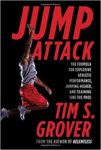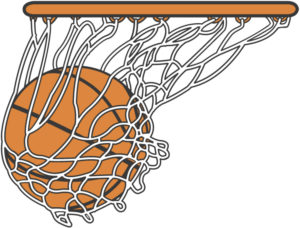As a player develops, there are certain skills that need to be acquired at each level of play. This article will lay out the skills that would go into a player progression plan * from the middle school to varsity level.
Before we get started… Let’s have FUN !
Of course the underlying “skill” is enjoyment of the game and that needs to come first. In fact, most players self-select themselves for the sport based on their love of the game and some connection that develops very early in their childhood. As a coach, it is our responsibility to take players to the next level while fanning the flames of their love of the game.
** Coach Wheeler’s view only…
 The player progression described below** is based on my coaching philosophy and the style of play that I like to use for my teams.
The player progression described below** is based on my coaching philosophy and the style of play that I like to use for my teams.
Another coach might have different priorities depending on how he expects his teams to compete. Having said that, there are probably a good amount of overlap and none of the skills mentioned will “go unused” by a coach, especially if a player becomes outstanding in that area.
Levels of Player Progression…
I originally tried to divide the player progression into 3 levels (Middle School / Frosh-JV / JV-Varsity) but, as you will see, there isn’t much “in the middle”. I think that is because many skills have a wide spectrum with lots of different levels along the way.
The difference between a Middle School player and a successful Varsity High School player can also depend on how that year’s team defines particular roles. In other word, someone might not have all the skills of a well-rounded varsity player but the ones that they do have (e.g rebounding or defense) could make them a strong role player for the team.
Let’s start by looking at the Middle School skills…
Middle School Level
- Passing (strength / heads-up)
- Catching (move to the pass)
- Position defense (relative to ball / athletics)
- Rebounding (box out / launch to the ball)
- Layup Technique (footwork / angles)
- Mid-range shot (touch / form)
- Run the floor (full speed / endurance)
- Triple Threat / Court Vision
- Growth Mindset
Frosh / JV …
[this level is basically the transition to, and preparation for, become a varsity player]
- Run the floor / Speed layups (w/contact, multi-angles)
- Heads Up dribble (quick & strong)
- Strong “set shot” – mid-range / 3 pt. / w/o thinking
JV / Varsity Level
- Power Drive (standing / full-speed / Moves)
- Strong Handles
- Jump (touch rim / dunk)
- Pressure M2M Defense (w/o fouls, w/o “Ole”)
- Off-ball defense (steals / traps / help)
- Signature Move(s) – Inside or perimeter (move/shoot)
- Court Awareness (instant ball movement)
- Mentally Strong *
- Strong Role on Team
* Mental Toughness or a Champion Mindset is a large subject and it can take years to develop but, to start with, it means that a player “Practices Like a Champion”. A Mentally Strong player is able to “out perform” opponents through their understanding of the game as well as their willingness to do what is required to win. A mentally strong player makes the other team work hard on both ends of the court.
How does progress happen?
Some of a player’s progress will happen naturally as they grow from middle school age to high school age. As they say, you can’t teach height. For some people that is not great news but there is good news too!
The good news (especially for “height challenged” players) is that most of the skills listed can be learned, even things like jump height. A good coach can help a player learn various skills and there is no shortage of videos on YouTube to show players ideas for skill building drills.
Who is holding you back?
I see it every year. A player doesn’t improve over the off-season and they are passed by other players who have improved. The missing ingredient for most players is not an exposure to the skills but rather a lack of consistent off-season work on those skills. While playing other sports during basketball’s off-season might help a player develop athletically, basketball is very much a game of skill. And skills require practice if you want to improve. I heard a good quote on a recent podcast… “If you still have the same weaknesses as you had last season [and haven’t improved your strengths], you have wasted the off-season.”
Bottom Line…
If you aren’t getting better each year, there will be someone who passes you and takes your minutes at the next level. Basketball is a team sport but it is also very competitive. There are only so many game minutes at the varsity level and they go to the best players (as defined by the coach).
At the end of the season, every player who is serious about their game needs to lay out their Player Progression Plan by identifying their weaknesses and strengths along with the activities that will help them improve. Ideally, this should be combined with a review by your varsity coach to determine how you might contribute most quickly at the varsity level.
Coach Wheeler’s In-season Player Progression Plan
I believe that “What we work on EVERYDAY improves over time.” That is why there are some basic elements that will show up in every practice that I run…
- Physical Challenges (running / defense / strength)
- Shooting
- [Perfections] which covers a number of skills
– Running
– Passing
– High speed layups
– Communication
Players should show progress in the first half of the season. By the time that we have played the teams on our schedule at least once, we should be ready to take our game to the next level. A tournament over Christmas break is always a good test to see where the team is in terms of player development as well as team cohesiveness and execution.
The second half of the season is focused on extending the team’s progress. We also want to do even better against opponents the 2nd time we play them. This approach is designed to get the team ready for the playoffs. If things go well, it also gives us a seeding that helps our drive for a championship.
All team success starts with the player’s progression and acquisition of skills. A coach can teach but the player has to take responsibility for their own development. If you show that you want to go the “extra mile”, most coaches love that attitude and will give you extra attention. As a player, you have to decide what you want. Do you want to be a key contributor at the varsity level? Or do you want to sit on the bench? You get to decide based on how you progress as a player. Hopefully this article gave you some ideas to work on. Please leave a comment below if you have any questions.


 The lunge is another underrated drill. In fact,
The lunge is another underrated drill. In fact, 
 Pattern Interrupts are a valuable tool that anyone can use to train your brain. We are all creatures of habit based on years of history. We have patterns that help us and others that don’t. You now have a tool to start changing those habits or patterns into something that better supports your goals.
Pattern Interrupts are a valuable tool that anyone can use to train your brain. We are all creatures of habit based on years of history. We have patterns that help us and others that don’t. You now have a tool to start changing those habits or patterns into something that better supports your goals. OODA stands for Observe / Orientate / Decision / Action and is a problem solving framework developed by a fighter pilot named
OODA stands for Observe / Orientate / Decision / Action and is a problem solving framework developed by a fighter pilot named 
 As I interviewed for various high school varsity coaching positions, I could see that some of the people on the selection committees seemed to be wondering “Why does he think he can take our school’s basketball program, which may have had only a handful of wins last season and establish a winning tradition?”
As I interviewed for various high school varsity coaching positions, I could see that some of the people on the selection committees seemed to be wondering “Why does he think he can take our school’s basketball program, which may have had only a handful of wins last season and establish a winning tradition?”